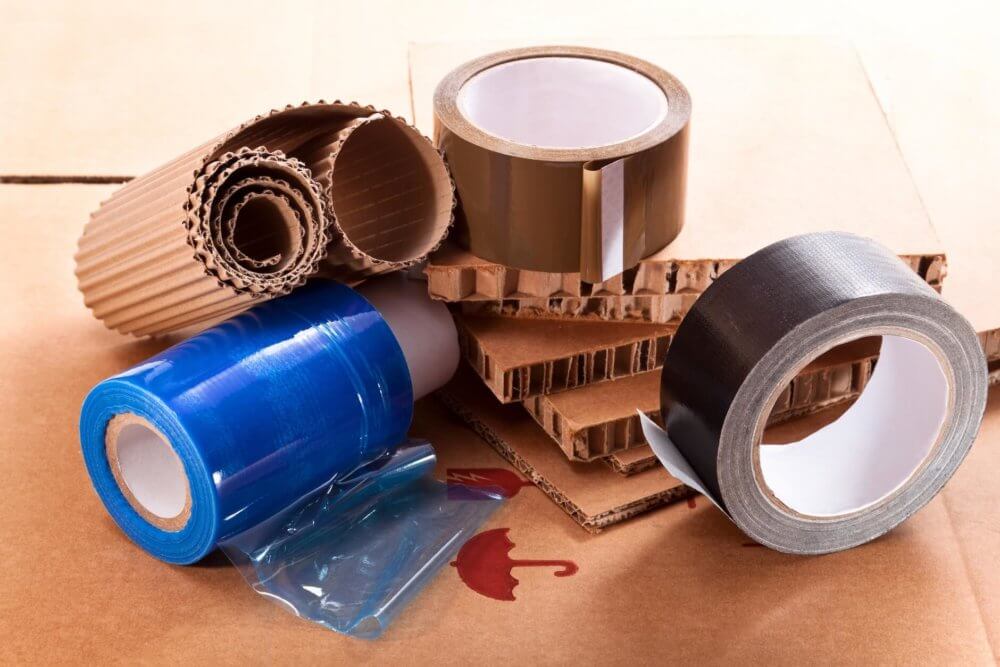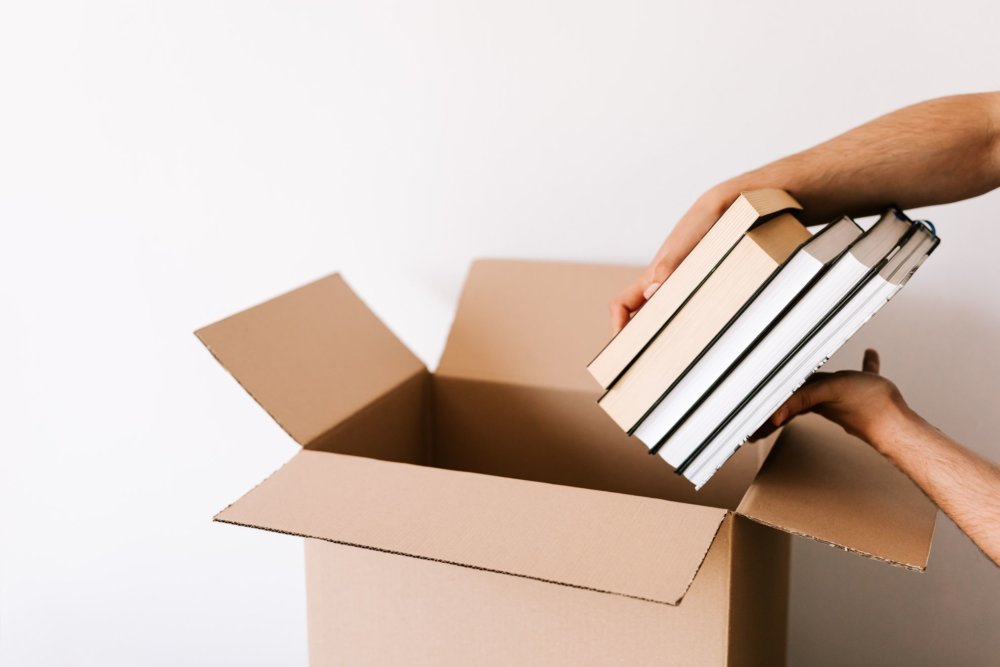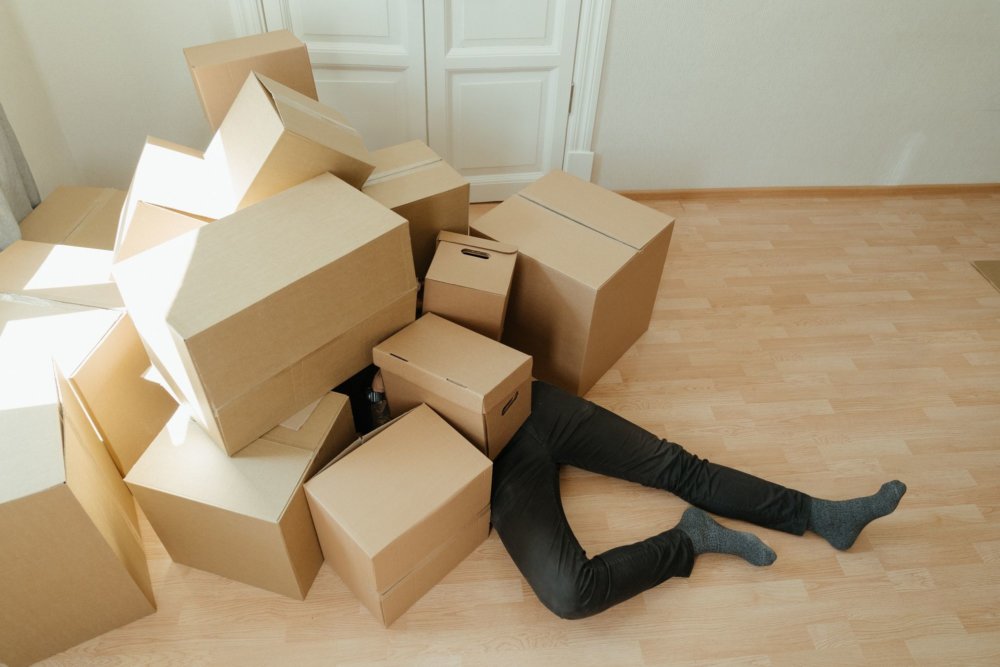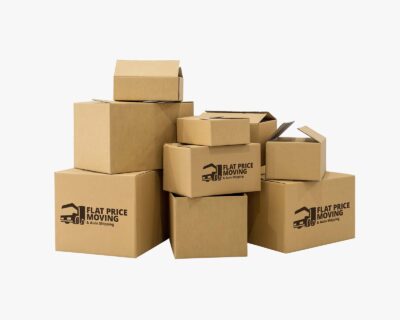How to Pack Craft Supplies for Cross-Country Moving
Long-distance moving can feel like a monumental task, especially when you’re a craft enthusiast with an overflowing supply stash. Whether you’re into painting, knitting, scrapbooking, or any other creative outlet, figuring out how to pack craft supplies doesn’t have to be a stressful experience. In fact, with a little planning and the right packing techniques, you can ensure that all materials make the journey and are ready for you to dive back in as soon as you settle in.

How to Pack Craft Supplies
Wondering how to pack all of your art supplies for moving? Start by inventorying and decluttering your collection, deciding what to keep, donate, or discard. Gather essential materials like sturdy boxes, bubble wrap, and eco-friendly options like biodegradable packing peanuts.
Use proper techniques for fragile, bulky, small, and heavy items, ensuring they’re well-organized and labeled. Secure boxes in the vehicle to prevent damage and, upon arrival, take time to set up an organized craft space. For a smoother experience, consider contacting professionals to help with the process and ensure a stress-free move.
Assessing the Craft Supplies You Own
Before diving into the packing process, taking a moment to assess your craft supplies can save you time, effort, and stress down the line.
Although a reliable long-distance moving company such as Flat Price Auto Transport and Moving could pack it up for you, most hobbyists and artists like to handle these things themselves. Here’s how to tackle this essential step effectively.
Inventory Everything Carefully
Start by making a comprehensive list of all your craft supplies. Whether you’re an avid painter with a collection of vibrant paints, a seamstress with a stash of beautiful fabrics, or a DIY enthusiast with various tools, it’s crucial to know exactly what you have. Organizing these supplies by category can make it easier to identify duplicates and prioritize what to keep. Consider the following categories:
- Art supplies: Paints, brushes, canvases, markers, and similar.
- Textiles: Fabrics, yarns, threads, and needles.
- Crafting tools: Scissors, glue guns, cutting mats, and other essential tools.
- Miscellaneous: Beads, buttons, adhesives, and more.
Creating an organized inventory not only helps in managing these supplies but also makes it easier to unpack once you reach the new destination.
Declutter Your Stash Thoroughly
Once you’ve compiled the inventory, it’s time to tackle the decluttering process. This step is about making thoughtful decisions regarding what to keep, donate, or discard. Start by assessing each item in your collection. Reflect on whether you’ve used it in the past year; if not, it may be time to get rid of it.
Consider the option of donating some of these materials. Many schools, community centers, and local charities often seek craft materials for art programs, and your unused items could inspire the next generation of creators. This not only benefits others but also frees up space in the collection.
As you sort through your supplies, be mindful of items that are damaged or dried out, like old paints or glue. Disposing of these responsibly helps maintain a tidy and organized collection.

Gathering Packing Materials
Now that you’ve assessed and streamlined everything, it’s time to gather the necessary packing materials. Having the right supplies on hand makes the process much smoother and ensures all the beloved items are well-protected during transit.
Essential Packing Supplies
To start, you’ll need a variety of boxes in different sizes. Smaller boxes are perfect for fragile items like paints and tools, while larger boxes can accommodate bulkier supplies like fabrics and rolls of paper. Bubble wrap and packing paper are crucial for cushioning fragile items, preventing them from shifting or breaking during the journey. Don’t forget the tape – sturdy tape is essential for securing all the boxes. Additionally, markers are invaluable for labeling each box clearly, so you’ll know exactly what’s inside when it’s time to unpack.
Eco-Friendly Options
If you’re passionate about the environment, consider incorporating eco-friendly protective materials into your preparations. Using recycled materials, such as old newspapers or padded paper, is a great way to reduce waste.
Biodegradable foam peanuts or even shredded paper can be excellent alternatives to traditional materials, providing cushioning while being gentler on the planet. Embracing these eco-friendly options helps protect these craft supplies and also contributes to a more sustainable moving experience.

Protective Techniques for Different Art Materials
When it comes to figuring out how to pack art supplies for moving, using the right techniques for each type of item can make all the difference. Here’s how to ensure that every supply item, no matter its size or fragility, is well-protected.
Fragile and Delicate Items
For delicate items like glass jars, paints, and tools, extra care is essential. Start by wrapping each fragile piece in bubble wrap or packing paper, ensuring that there are multiple layers for added cushioning. Use tape to secure the wrap in place. It’s wise to place these items in sturdy boxes, filling any gaps with crumpled paper or additional bubble wrap to prevent movement. Clearly label these boxes as “Fragile” to remind anyone handling them to exercise caution.
Bulkier, Space-Consuming Supplies
When dealing with bulkier items like fabrics and yarn, folding and storing them efficiently is key. Start by folding fabrics neatly and stacking them in a larger box or bin. To prevent creasing, consider rolling them instead of folding them. For yarn, place each skein in a breathable container or a large zip bag to keep them organized and tangle-free. If space permits, stacking these boxes in a way that distributes weight evenly will make transporting easier.
Small, Easily Displaced Items
For small supplies such as beads, buttons, and other tiny components, organization is crucial. Use small containers, like tackle boxes or divided storage bins, to keep items separated and easy to access. Alternatively, zip bags can work well for grouping similar items together. Clearly label each container to ensure quick identification when it’s time to settle into a new craft space.
Handling Heavy Supplies
When it comes to heavy items like books, tools, or larger crafting materials, lifting and moving safely is vital to avoid injury. Use smaller boxes for these items, as this will make them easier to carry. Always lift with your legs, not your back, to prevent strain. If possible, enlist help from friends or family to share the load, and consider using a dolly or hand truck to transport heavier boxes.
Labeling and Organizing Boxes
Once all craft supplies are securely packed, the next step is to ensure that boxes are clearly labeled and organized. This can significantly simplify the unpacking process, making it easier to locate essential items once the journey is complete.
Importance of Clear Labels
Labeling each box clearly is crucial for a smooth transition. When the time comes to unpack, clear labels can save hours of searching through multiple boxes. Consider using a marker to write the contents of each box on its side, ensuring that labels are visible even when the boxes are stacked.
Including the room where each box belongs can also streamline the process. For example, boxes designated for the craft room can be labeled with specific details like “Paints and Brushes” or “Fabric and Yarn.”
Categorizing Boxes Strategically
Organizing boxes by type of craft or usage can enhance efficiency when it’s time to unpack. Group similar items together to make it easier to locate supplies when inspiration strikes. For instance, all painting materials can be stored in one box, while sewing supplies can occupy another. If space allows it, you might also consider creating subcategories within these groups. For example, within the sewing box, you could have separate sections for threads, fabrics, and tools.

Transportation Considerations and Choosing the Right Vehicle
Selecting the appropriate vehicle for transporting craft supplies can make a significant difference in the overall experience. If the collection is modest and easily fits, a personal vehicle might suffice, as you will have greater control over the items.
However, a moving truck may be a better choice for larger inventories or bulkier supplies. Choosing cross-country movers and their moving truck will provide you ample space, and you could have a more organized layout of boxes and materials. Not to mention that a relocation and auto transport company can provide you with various long-distance moving services, as well as car shipping and a temporary storage unit.
Make Sure the Placement Is Secure
Once the vehicle is selected, securing boxes is crucial for preventing damage during transit. Begin by arranging the heaviest boxes on the bottom and lighter ones on top to create a stable load. If using a moving truck, utilize straps or ropes to secure boxes and prevent shifting while on the road.
Placing fragile items in the center of the load, surrounded by cushioning materials, can further protect them from jostling. Regularly check the setup throughout the journey to ensure everything remains secure, or simply leave it to the professionals.

Unpacking at Your New Home
After arriving at the new home, it’s time to focus on unpacking and setting up a dedicated craft area. Start by designating a specific area for crafting, ensuring it has adequate lighting and space to work. As boxes are unpacked, take the opportunity to arrange supplies in a way that promotes efficiency.
Consider using shelving units, storage bins, or craft carts to keep everything accessible and organized. Arranging items by category, such as painting, sewing, and miscellaneous supplies, will facilitate a smoother workflow.
Go Through Everything to Ensure Nothing Is Lost or Broken
Once everything is unpacked, it’s a good idea to take inventory of supplies against the initial list created before the journey. This step helps ensure that nothing is lost or damaged during transportation. It also provides a chance to reassess what’s on hand.
Moving Services
Whether you are moving from New York to Los Angeles or from San Francisco to Chicago, we can help you.
Read morePacking Services
Our moving teams are trained to pack your belongings in the most efficient manner possible.
Read moreMoving Insurance
Flat Price Moving and Auto Transport Company offers moving insurance to cover potential damages
Read moreOur Long-Distance Movers Handle Everything With Care
By following these key steps, you can ensure that your cherished materials arrive safely at your new home. Start by assessing and decluttering your supplies, gathering essential packing materials, and employing tailored techniques for different types of items. Clear labeling and organized boxes will make unpacking a breeze, while careful transportation will protect your supplies throughout the journey.
Remember, taking your time with the packing process is crucial. This is your opportunity to refresh your collection and set the stage for future creativity. If you’re looking for a moving and car shipping company for assistance with relocation, don’t hesitate to reach out to our team at Flat Price Auto Transport and Moving. We’re here to help make your transition as smooth and stress-free as possible, allowing you to focus on what you love most – creating! Contact us, and let us handle all the hard work.









